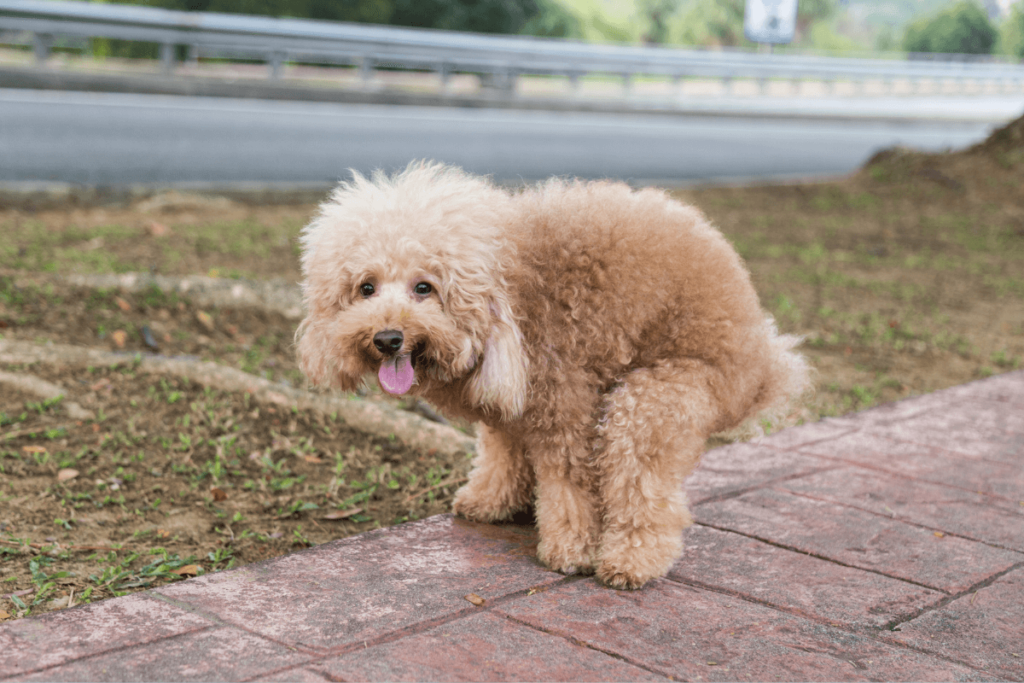Problems with your pup’s rear end aren’t the most pleasant subjects to discuss, but it is important to know what’s going on back there if your fur friend is in pain or has physical changes under the tail. You might notice excess licking, scooting, redness, bleeding, or swelling around your dog’s anus. Since we tend to see our dogs as being similar to ourselves, a reasonable thought would be that the dog is suffering from hemorrhoids. Hemorrhoids are swollen veins inside or outside of the rectum. They can lead to painful itching or discomfort, swelling, or bleeding. They are typically caused by extra pressure in the area, which can be a result of pregnancy or constipation.
Because a dog’s body is horizontal rather than vertical like a human’s, their gastrointestinal tracts do not cause pressure to build on these veins. This means it is very unlikely that your dog has actual hemorrhoids, but any bleeding, protrusions, or discomfort around the anus might indicate a serious condition and is certainly cause for a visit to your trusted veterinarian.
Table of contents:
If not hemorrhoids, what could it be?
There are a number of reasons why your dog might be experiencing anal discomfort.
Anal sac disease:
The most common cause of anal swelling and discomfort in dogs is anal sac disease, where the anal sacs become clogged or infected. All dogs have two pouches on the sides of their anus containing the anal glands. These glands secrete a smelly fluid that helps mark their territory and offers other dogs information about them. Dogs are getting this information when they sniff each others’ rear ends as a greeting. Firm stools clear the glands as they pass out of the dog. However, a dog that has loose, watery stool might not be able to adequately express the fluid from these sacs, which could lead to infection. If a dog is suffering from anal sac disease, they might bite at their rear end, scootch across the carpet, or excessively lick their anus. These behaviors can damage the delicate tissue and cause further problems. Small breeds such as Lhasa Apsos, toy poodles, chihuahuas, and Cavalier King Charles spaniels are more susceptible to anal sac disease.
If you suspect this is the cause of your dog’s discomfort, changing their diet to include foods with more fiber, such as canned pumpkin, could help bulk their stool to allow the glands to express naturally. If your dog has signs of infection, such as discharge or pus, low energy or fever, a vet should be consulted, and the glands might have to be expressed manually.
Perianal fistula:
These are chronic, foul-smelling wounds that found in and around the dog’s anus. Their direct cause is unknown, but they could be a result of fecal matter and secretions irritating the hair and skin around the anus. They are seen to happen more frequently to dogs with skin problems and/ or immune system deficiencies, and German Shepherds and older dogs are more commonly seen with them. Dogs might react to these wounds with a loss of appetite, difficulty or avoidance of passing stool, a change in temperament, or biting and licking the affected area.
There are a few medical treatments available, in addition to stool softeners and antibiotics. Dogs with infections that do not respond to these measures might be candidates for surgery. Veterinary consultation is important throughout your dog’s treatment.
Perianal hernia:
Often mistaken for an external hemorrhoid, a perianal hernia occurs when an internal organ passes through a weak spot in the intestine or muscle near the dog’s anus. This results in a swelling below and to the side of the anus. While it can occur on both sides, the majority are found on the right side only. These hernias are seen most often in unneutered middle-aged males, and the breeds more frequently affected are corgis, Boston terriers, collies, kelpies, dachshunds, Old English sheepdogs, and Pekingese.
Typical symptoms of a perianal hernia are swelling around the anus, difficulty and straining to empty their bowels, and pain when passing stool. These hernias become dangerous if they impact the dog’s ability to urinate, and they should immediately be seen by a veterinarian. They might recommend surgery to correct the hernia, but there is about a 50% chance of recurrence even after surgery.
Prolapsed rectum:
This is a very rare condition where part of the rectum emerges from the anus. It looks like a cylinder protruding from the dog’s anus. Young dogs who have to strain to empty their bowels or have serious and long-lasting diarrhea are more likely to suffer from prolapse. A veterinarian should always examine a dog with anything protruding from the anus. The vet will try to determine and correct the cause of the prolapse and will make sure it is replaced and repaired.
Anal masses and polyps:
Polyps (small growths that are usually benign and are rare in dogs) and tumors (which can be benign or cancerous) might also be mistaken for hemorrhoids in dogs. Straining or painful defecation, blood in the stool, or diarrhea are common symptoms. Cavalier King Charles spaniels, cocker spaniels, German shepherds, and springer spaniels are more likely to get tumors of the anal area. Tumors of the anus are more common in unneutered males, and neutering them often causes benign masses to disappear. For other dogs, or those who have been found to have cancerous tumors, surgery is usually required.
The last word
While it is unlikely that your dog is suffering from hemorrhoids, if you ever see them straining or in obvious pain from a bowel movement, find blood in the stools, or see them licking, chewing, or otherwise worrying their rear end, it could be a sign of a problem that needs to be quickly addressed by your veterinarian. It is not a good idea to use a medicated cream like Preparation H that is formulated for humans, unless it is recommended by your veterinarian. With quick attention to whatever is causing pain or discomfort to your best fur friend’s rear end, you can be sure that they will be back to their usually happy self as soon as possible.
Sources:
https://www.akc.org/expert-advice/health/can-dogs-get-hemorrhoids/









